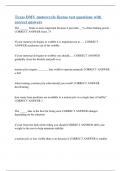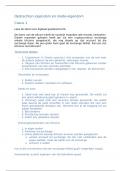Summary
Summary The Science of Sound (7S6X0) - Book, lectures & additional reading
- Course
- Institution
- Book
Summary of the book and/or lectures. Contains summaries of the following chapters/paragraphs: H1.1-1.4, 1.6, 1.7, 1.9, 1.10 H2.1-2.7 H3.1-3.11 H4.1-4.10 H5.1, 5.2, 5.5, 5.7 H6.1-6.3, 6.5 H15.1-15.6 H23.1-H23.13 H24.1-24.12 H25.1 H7, 10, 13, 16, 30 & 32 only contains the 'summ...
[Show more]













